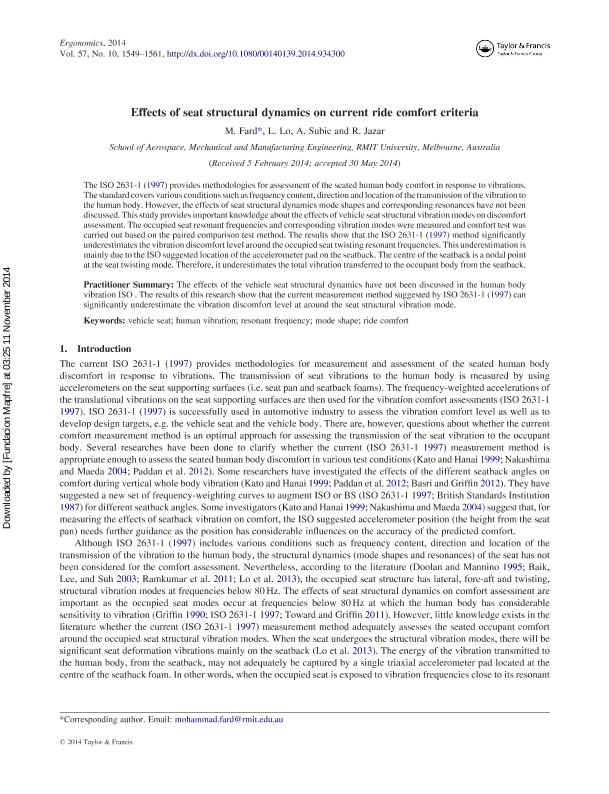Effects of seat structural dynamics on current ride comfort criteria

Contenido multimedia no disponible por derechos de autor o por acceso restringido. Contacte con la institución para más información.
| Tag | 1 | 2 | Valor |
|---|---|---|---|
| LDR | 00000cab a2200000 4500 | ||
| 001 | MAP20140041237 | ||
| 003 | MAP | ||
| 005 | 20141111180107.0 | ||
| 008 | 141111e20141006esp|||p |0|||b|spa d | ||
| 040 | $aMAP$bspa$dMAP | ||
| 084 | $a875 | ||
| 245 | 0 | 0 | $aEffects of seat structural dynamics on current ride comfort criteria$cM. Fard...[et.al] |
| 520 | $aThe ISO 2631-1 (1997) provides methodologies for assessment of the seated human body comfort in response to vibrations. The standard covers various conditions such as frequency content, direction and location of the transmission of the vibration to the human body. However, the effects of seat structural dynamics mode shapes and corresponding resonances have not been discussed. This study provides important knowledge about the effects of vehicle seat structural vibration modes on discomfort assessment. The occupied seat resonant frequencies and corresponding vibration modes were measured and comfort test was carried out based on the paired comparison test method. The results show that the ISO 2631-1 (1997) method significantly underestimates the vibration discomfort level around the occupied seat twisting resonant frequencies. This underestimation is mainly due to the ISO suggested location of the accelerometer pad on the seatback. The centre of the seatback is a nodal point at the seat twisting mode. Therefore, it underestimates the total vibration transferred to the occupant body from the seatback. | ||
| 773 | 0 | $wMAP20100019818$tErgonomics : the international journal of research and practice in human factors and ergonomics$dOxon [United Kingdom] : Taylor & Francis, 2010-$x0014-0139$g06/10/2014 Volumen 57 Número 10 - octubre 2014 |

